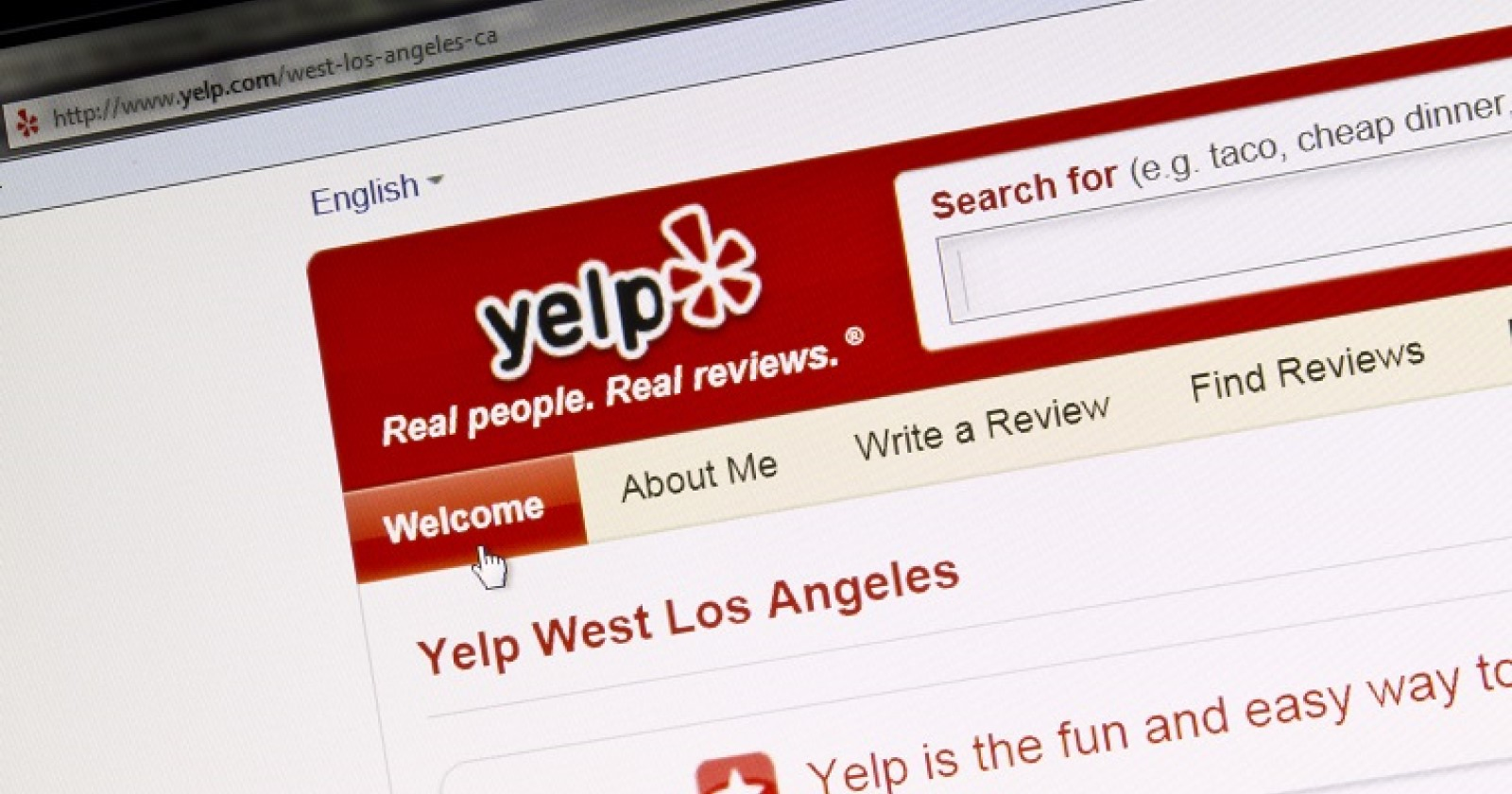In the age of online decision-making, navigating a sea of local businesses can feel overwhelming. Enter Yelp, a powerful online platform that has become synonymous with user-driven reviews. Founded in 2004 by former PayPal employees Jeremy Stoppelman and Russel Simmons, Yelp’s core mission is to connect consumers with great local businesses. By leveraging the collective voice of millions of users, Yelp provides a one-stop shop for discovering, researching, and interacting with businesses of all kinds.

Yelp’s foundation lies in its vast collection of user-generated reviews. These reviews, ranging from short blurbs to detailed narratives, offer firsthand experiences from real customers. Consumers can gain valuable insights into a business’s atmosphere, service quality, product offerings, and even specific dishes at a restaurant. The sheer volume of reviews, coupled with Yelp’s algorithm that prioritizes helpful and trustworthy content, creates a reliable resource for consumers seeking the best local businesses.
While reviews are undeniably Yelp’s cornerstone, the platform offers a much wider range of functionalities. Users can browse high-quality photos uploaded by reviewers, giving them a visual glimpse of a business’s interior, exterior, and even the presentation of food. Yelp also integrates seamlessly with popular mapping services, allowing users to find nearby businesses and navigate directly to their locations. For added convenience, some businesses enable online reservations or appointment booking directly through the Yelp platform.
Yelp’s impact extends far beyond simply connecting consumers with businesses. The platform empowers consumers to make informed decisions based on real-world experiences, fostering a sense of accountability for local businesses. Knowing their experiences will be shared publicly on Yelp incentivizes businesses to prioritize customer satisfaction and maintain high-quality standards. Positive reviews can significantly boost a business’s online presence and attract new customers, while negative reviews serve as a wake-up call to address shortcomings. In this way, Yelp fosters a dynamic environment where businesses compete for customer loyalty by delivering exceptional service.
Yelp continues to evolve and adapt to the ever-changing digital landscape. With the rise of social media integration and the increasing focus on mobile browsing, Yelp is constantly innovating to stay at the forefront of local business discovery. Looking ahead, we can expect Yelp to introduce new features that leverage artificial intelligence and machine learning to personalize user experiences and provide even more insightful recommendations. As Yelp continues to grow and transform, its core mission of empowering consumers and fostering a thriving local business landscape will undoubtedly remain central to its success.
What’s new with Yelp?
Yelp has been busy improving its platform for both users and businesses. For users, finding the right business just got easier. You’ll see a personalized feed highlighting relevant businesses based on your interests and location. Plus, the revamped search experience makes navigating results more intuitive. Yelp also introduced “Request a Quote” to streamline getting quotes from multiple businesses for projects, allowing for price comparison and better deals. Additionally, the “Projects” feature keeps you organized by allowing you to track project progress and communicate directly with the businesses involved.
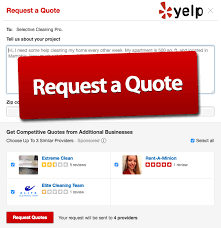
Business owners haven’t been left out. Yelp’s update offers valuable market insights and competitor data through their revamped business owner experience. This equips businesses to make informed decisions about marketing and operations. Yelp’s AI-powered “smart budgets” feature even helps businesses optimize their ad spend for better local market reach. These are just a few highlights, and Yelp constantly innovates to make finding the perfect business or customer a breeze on their platform.
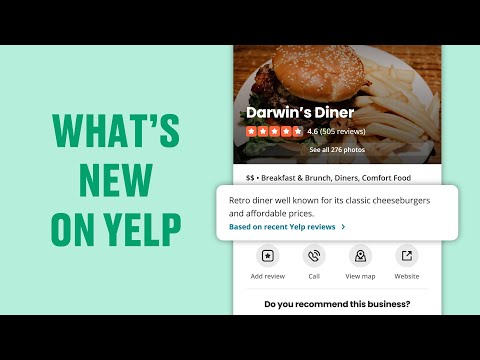
Target Audience of Yelp
Yelp targets savvy shoppers who rely on reviews to make informed decisions. 83% of Yelp users convert their browsing into action, hiring services or buying products from businesses they discover on the platform. Additionally, a whopping 90% of users actively compare options on Yelp before committing to a business, highlighting their research-oriented approach. This focus on reviews is further emphasized by the demographic makeup of Yelp’s audience.
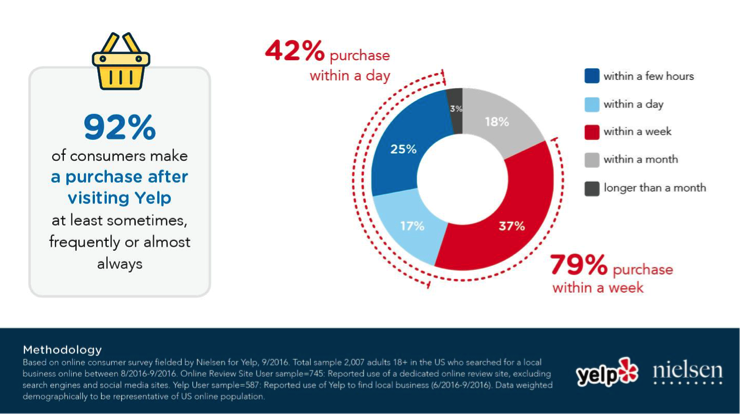
Yelp’s user base skews towards well-educated individuals, with 60% boasting college degrees. This suggests a comfort with critical thinking and a desire for in-depth information before making purchases. Furthermore, 55% of users fall within the high-income bracket (over $100,000 annually), indicating a significant purchasing power among Yelp’s audience.
The platform also attracts a socially connected user base, with 80% of users actively engaging on social media platforms like Facebook and Twitter. This implies that Yelp users value the opinions of others and might be influenced by recommendations from their social circles. In conclusion, Yelp caters to a discerning group of tech-savvy shoppers who leverage reviews, education, and social connections to make smart purchasing decisions.
Marketing Strategy of Yelp
Yelp, a popular online platform, primarily focuses on user-generated reviews and recommendations for local businesses. Its marketing strategies are geared towards expanding its user base, enhancing user engagement, and strengthening its position as a go-to platform for local business information. Here are some key aspects of Yelp’s marketing strategies:
1. User-Generated Content
Yelp strategically leverages User-Generated Content (UGC) as a cornerstone of its marketing strategy. Reviews, photos, and even videos posted by users about their experiences with businesses on Yelp all contribute to this valuable UGC pool. These authentic customer testimonials hold immense weight for potential patrons seeking reliable recommendations. Positive reviews can significantly boost a business’s credibility and social proof, attracting new customers and fostering brand loyalty. Yelp understands this power and actively encourages honest reviews to ensure the UGC is trustworthy and fosters informed decision-making by its user base.
User-Generated Marketing Campaigns of Yelp
Yelp doesn’t run traditional UGC marketing campaigns where they create content for users to share. Instead, Yelp’s entire platform is built on the foundation of User-Generated Content (UGC). By encouraging users to write reviews, share photos and experiences, Yelp fosters a vibrant UGC ecosystem. This focus on UGC fuels several key marketing wins for Yelp:
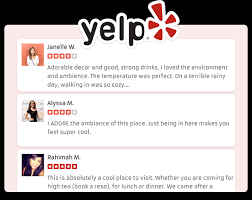
- Increased Brand Awareness: With over 100 million reviews and over 100 millions of app downloads, Yelp’s user base actively promotes the platform through their contributions. Every review, photo, and check-in adds to Yelp’s visibility and brand recognition.
- Enhanced User Engagement: The core value of Yelp lies in user-generated content. By actively participating in reviews and photo sharing, users become invested in the platform’s success, leading to a more engaged user base.
- Boosted Trust and Credibility: Authentic reviews from real users hold significant weight for potential customers seeking reliable recommendations. Positive reviews and user-generated content build trust and social proof, attracting new customers and fostering brand loyalty.
While Yelp doesn’t run specific UGC campaigns, they’ve hosted initiatives like “Yelp for Good” or “Yelp for Women-Owned Businesses” that encourage users to focus their reviews on specific categories, further enriching the platform’s UGC treasure trove. In essence, Yelp’s core business model is a masterclass in leveraging User-Generated Content for successful marketing.
2. SEO and Organic Traffic
Yelp leverages Search Engine Optimization (SEO) and organic traffic to attract users by ensuring its platform ranks high in search results relevant to local businesses. Here’s a breakdown of their strategy with examples:
Keyword Targeting:
Yelp optimizes its platform and business listings for keywords that users might search for when looking for local businesses. These keywords include terms like “best [type of business] near me,” “[business name] + reviews,” and “[city] + restaurants.”
Example: A bakery in San Francisco optimizes its Yelp listing with keywords like “San Francisco bakery,” “pastries near me,” and “[Bakery Name] reviews.” This increases the chances of the bakery showing up on the first page of search results when users search for these terms.
Content Rich Listings:
Yelp encourages businesses to create detailed listings with accurate information, high-quality photos, and engaging descriptions. This content helps search engines understand what the business offers and improves its ranking for relevant searches.
Example: A restaurant listing includes its address, opening hours, a detailed menu, professional photos of the food and ambiance, and a customer-written description of the dining experience. This comprehensive content makes the listing informative and valuable to search engines.
User Reviews and Activity:
Yelp places significant value on user-generated content like reviews, photos, and check-ins. This activity signals to search engines that the platform is active and relevant, boosting its ranking.
Example: Positive reviews mentioning specific dishes and friendly service can improve a restaurant’s ranking for searches related to those keywords. Additionally, frequent check-ins from users indicate the restaurant is popular and actively operating.
Localized Focus:
Yelp tailors search results and business listings based on the user’s location. This ensures users see relevant local businesses when searching for something nearby.
Example: When a user in Seattle searches for “coffee shops,” Yelp prioritizes cafes in their area, not ones across the country. This localized approach improves the user experience and keeps them coming back for local business discovery.
By implementing these strategies, Yelp attracts organic traffic through search engines. Users seeking local businesses find Yelp listings prominently displayed, driving users to the platform and ultimately to the local businesses themselves. This SEO focus benefits both Yelp and the businesses on its platform.
3. Partnerships and Integrations
Yelp leverages partnerships and integrations to expand its reach and enhance user experiences across various platforms. Here’s a closer look at how these partnerships fuel Yelp’s marketing strategy:
Enhanced User Experience:
Restaurant Management: Integrations like Yelp Guest Manager with Toast (POS system) provide valuable insights to restaurants, allowing them to streamline operations and improve customer service. Diners benefit too, as restaurants can offer features like online reservations through Yelp Guest Manager and Reserve with Google.
Seamless Discovery: Partnerships like Yelp and GrubHub allow users to seamlessly transition from reading reviews to placing online orders directly within the Yelp platform. Similarly, integrations with travel apps like Roadtrippers help users discover local businesses while planning trips.

Reaching New Audiences:
Targeted Advertising: Yelp Ads’ partnership with AgencyAnalytics equips marketing agencies with tools to better target local customers and drive revenue for their clients. This expands Yelp’s advertising reach beyond individual businesses.
Strategic Collaborations: Integrations like Yelp with Mailchimp and Realtor.com expose Yelp’s valuable local business listings to entirely new user bases. MetLife consumers discover local dentists, and potential homebuyers find relevant businesses through these partnerships.
Overall Benefits:
These partnerships are win-win scenarios. Yelp gains a wider audience and strengthens its position as a local business authority. Partners benefit by leveraging Yelp’s extensive user base and established platform. Ultimately, users enjoy a more convenient and comprehensive experience when discovering and interacting with local businesses.
Additionally, Yelp’s technology partnerships with companies like Okta and Visa bolster their platform’s security and functionality, further enhancing user experience and trust.
By strategically forming partnerships and integrations, Yelp expands its reach, refines user experiences, and solidifies its place as a vital resource for both local businesses and consumers.
4. Advertising Solutions
Yelp Advertising stands out as a powerful marketing tool for local businesses seeking to connect with potential customers actively searching for their products or services. Here’s how Yelp’s advertising solutions fuel local business growth:
Reaching the Right Audience:
Targeted Ads: Yelp leverages user location data to ensure your business ads appear in relevant searches. This ensures your ads reach local users actively seeking what you offer, maximizing impact for geographically-focused businesses. This is a game-changer for small businesses looking to expand their customer base within their local community.
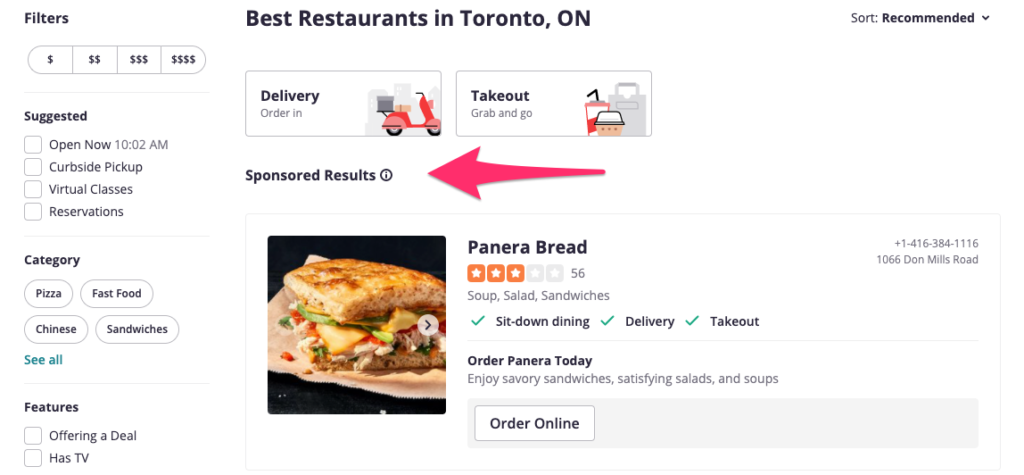
Cost-Effective Marketing:
Pay-Per-Click (PPC) Model: You only pay when someone clicks on your ad. This allows for precise budget control and ensures you’re only paying for genuine interest and potential customers visiting your Yelp profile.
Flexibility and User-Friendliness:
Flexible Budgeting: Set a daily budget that suits your needs. Yelp ensures you never exceed your limit, providing peace of mind for businesses of all sizes.
Easy-to-Use Platform: Yelp’s advertising platform is designed for ease of use, even for those without prior online advertising experience. This removes technical barriers and empowers businesses to take charge of their online presence.
Measurable Results:
Detailed Reporting: Track the performance of your campaigns with comprehensive reports. See exactly how many new customers you’re acquiring through Yelp Ads, allowing you to optimize your strategy and maximize your return on investment (ROI).
In essence, Yelp Advertising offers a targeted, cost-effective, and user-friendly solution for local businesses to reach potential customers actively looking for what they offer. The ability to precisely target the local audience, coupled with the PPC model and insightful reporting, empowers businesses to make informed marketing decisions and achieve their growth goals.
5. Social Media Strategy
Yelp’s social media strategy revolves around fostering a dynamic online community where users connect, engage, and discover local businesses. Here’s a breakdown of their key tactics:
User Engagement:
Interactive Platform: Yelp goes beyond reviews. Users can create profiles, connect with friends, participate in forum discussions, and even attend offline Yelp events. This fosters a sense of community and keeps users actively engaged.
Social Sharing: Yelp integrates seamlessly with popular platforms like Facebook and Twitter. Users can effortlessly share reviews across these networks, amplifying the reach of positive experiences and recommendations. This social proof builds trust and promotes local businesses to a wider audience.
Empowering Businesses:
Yelp Connect: This feature empowers businesses to cultivate a following and directly engage potential customers. Businesses can share posts highlighting their unique offerings and what sets them apart. Yelp Connect also provides valuable data on post engagement, allowing businesses to refine their social media strategies.
By fostering a community-driven approach, Yelp’s social media strategy benefits both users and businesses. Users discover trustworthy recommendations and connect with like-minded individuals. Businesses gain valuable exposure, build trust with potential customers, and cultivate a loyal following within the local community. This focus on social connection strengthens Yelp’s platform as a vital resource for local business discovery.
By employing these diverse marketing strategies, Yelp aims to continuously grow its user base, enhance user engagement, and solidify its position as a leading platform for discovering and reviewing local businesses.
Marketing Mix of Yelp
Yelp’s success can be attributed to its well-defined marketing mix catering to both consumers and businesses. Let’s dissect the 4Ps (Product, Price, Place, and Promotion) to understand how Yelp strategically positions itself in the market:
1. Product
Core Value Proposition: Local Business Discovery Platform:
- Review & Rating System: At the heart of Yelp lies the user-generated review and rating system. Consumers can submit detailed reviews with star ratings, praise specific aspects of businesses, or highlight areas for improvement. This transparency empowers informed decision-making for other users.
- Photos & Videos: Yelp allows users to upload photos and videos alongside reviews. This visual content showcases the ambiance, food presentation, products, or team of a business, providing a more immersive user experience and a richer perspective for potential customers.
- Business Profiles: Detailed profiles act as a one-stop shop for business information. Users can find comprehensive details like contact information, opening hours, menus, service offerings, a gallery of user-uploaded photos, and most importantly, customer-generated reviews and ratings.
- User Community Features: Yelp goes beyond just reviews. Features like following friends, participating in forum discussions on local businesses and events, and even attending Yelp-hosted offline events foster a sense of community. This social aspect keeps users engaged and invested in the platform.
- Mobile App: Understanding that on-the-go convenience is crucial, Yelp offers a user-friendly mobile app that mirrors the core functionalities of the website. This ensures seamless access to searching for businesses, reading reviews, and leaving feedback while on the move.
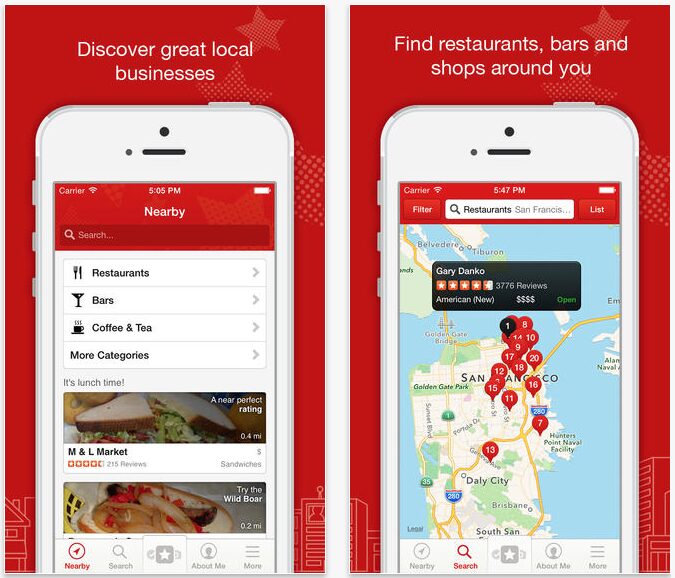
- Targeted Advertising: Yelp Ads cater to businesses seeking to reach a targeted audience. Businesses can create targeted ad campaigns to reach potential customers actively searching for similar products or services in their local area.
Constant Innovation:
Yelp prioritizes continuous improvement by adding new features and functionalities. Examples include:
- Request a Quote: This feature streamlines the process for users to request quotes from multiple businesses for projects, allowing for price comparison and better deals.
- Projects: This feature helps users keep track of ongoing projects by allowing them to organize information, communicate directly with involved businesses, and manage project progress all within the Yelp platform.
- AI-powered “Smart Budgets” for Businesses: Yelp utilizes AI to help businesses optimize their advertising spend. “Smart budgets” allocate ad spend more effectively, maximizing return on investment (ROI) for businesses using Yelp Ads.
2. Price
Freemium Model for Consumers: Yelp understands that basic functionalities are essential for user acquisition and engagement. Core features like searching for businesses, reading reviews, and browsing photos are free to access. This low barrier to entry attracts a large user base.
Subscription Model (Optional): Yelp offers premium memberships with additional perks to entice a segment of users who seek an enhanced experience. These subscriptions might include features like ad-free browsing, exclusive discounts on events or special offers from businesses, and potentially additional filters or sorting options for search results.
Pay-Per-Click Model for Businesses: Yelp Ads operate on a pay-per-click (PPC) model. Businesses only incur charges when a user clicks on their ad displayed on Yelp. This cost-effective advertising option allows businesses to target their ideal customers and only pay for genuine interest generated.
3. Place
Widespread Accessibility: Yelp understands the importance of being readily available to users. Their platform is accessible through a user-friendly website and a well-regarded mobile app. This ensures users can access Yelp on desktops, laptops, tablets, and smartphones, catering to various usage preferences and situations.
Localization: Yelp prioritizes local search results. When a user searches for a business type (e.g., restaurants, plumbers), Yelp tailors the results to display relevant options in the user’s vicinity. This ensures users discover local businesses that are geographically convenient for them.
Partnerships and Integrations: Yelp broadens its reach and user touchpoints by strategically partnering with various platforms. Examples include integrations with Google Maps, reservation systems for restaurants, and industry-specific platforms. This allows Yelp content to be surfaced within these partner platforms, increasing visibility and user acquisition for Yelp.
4. Promotion
User-Generated Content (UGC): The cornerstone of Yelp’s promotional strategy lies in user-generated content (UGC). Positive reviews, informative photos, and social media sharing organically promote businesses and establish Yelp as a trusted resource. Yelp actively encourages users to share their genuine experiences, fostering a sense of authenticity and building trust.
SEO (Search Engine Optimization): Yelp invests in SEO strategies to ensure its platform and business listings rank high in search results for local business queries. This involves optimizing content with relevant keywords, ensuring accurate and up-to-date business information, and encouraging user engagement through reviews and photos. By appearing prominently in search results, Yelp gains organic traffic and positions itself as a go-to resource for local business discovery.
Social Media Marketing: Yelp leverages social media platforms like Facebook, Twitter, and Instagram to engage users, share content (e.g., interesting reviews, “Best Of” lists), and promote its features. This social media presence keeps Yelp at the forefront of users’ minds, fosters brand awareness, and allows for two-way communication with the user base.
Partnerships and Collaborations: Yelp strategically collaborates with industry leaders and complementary services to expand its reach and expose its platform to new user bases. Examples include partnerships with:
- GrubHub: Allowing users to seamlessly transition from reading reviews to placing online orders directly within the Yelp app.
- Mailchimp: Yelp integrates with Mailchimp, enabling MetLife consumers to discover local dentists through targeted email campaigns.
- Realtor.com: Another integration helps prospective homebuyers discover relevant local businesses (e.g., plumbers, electricians) through Realtor.com.
- Roadtrippers: This partnership allows travel app users to discover local businesses and plan trips using Yelp’s extensive database and user-generated reviews. These collaborations provide Yelp with valuable exposure to new user segments and strengthen its position as a comprehensive local business resource.
Targeted Advertising: Yelp employs targeted advertising strategies to reach both consumers and businesses. For consumers, Yelp might advertise its mobile app download on other relevant platforms. For businesses, Yelp Ads target potential customers actively searching for similar products or services in their local area. This targeted approach ensures advertising spend is maximized and reaches the most relevant audiences.
In conclusion, Yelp’s marketing mix is a well-coordinated effort that caters to both consumers and businesses. The platform itself (Product) offers valuable features for local business discovery and user engagement. A freemium pricing model (Price) balances user access with monetization strategies. Widespread accessibility across various devices and partnerships (Place) ensure users can find Yelp wherever they are. Finally, a multi-pronged promotional strategy (Promotion) leverages UGC, SEO, social media, partnerships, and targeted advertising to effectively reach target audiences and establish Yelp as a leader in local business discovery.
Porter Five Forces of Yelp
Michael Porter’s Five Forces framework analyzes the competitive landscape of an industry. Let’s delve into each of the Five Forces to understand the competitive environment Yelp faces:
1. Threat of New Entrants:
Moderate Threat: While starting a local business review platform might seem easy, establishing a user base and achieving critical mass to compete with Yelp is challenging. Existing review platforms like Google Maps and social media reviews present competition, but they may not offer the same depth and focus on local businesses as Yelp.
Barriers to Entry: Building a reputation for trust and credibility takes time. Yelp’s established user base and extensive review history create a barrier for new entrants. Additionally, attracting users and businesses requires significant marketing efforts.
2. Bargaining Power of Suppliers:
Low Threat: In Yelp’s case, suppliers are primarily the businesses listed on the platform. Since individual businesses have minimal leverage over Yelp, their bargaining power is weak.
Limited Impact: While some large business chains might have more bargaining power, Yelp still offers significant value by connecting them with potential customers. Overall, suppliers have minimal influence on Yelp’s pricing or operating model.
3. Bargaining Power of Buyers:
Moderate Threat: Yelp users have some bargaining power. They can choose to use alternative platforms or simply not leave reviews.
Mitigating Strategies: Yelp offers a freemium model with core features accessible for free. This caters to budget-conscious users. Additionally, Yelp focuses on user experience by continuously improving features and fostering a sense of community, encouraging user engagement and review submissions.
4. Threat of Substitutes:
High Threat: Several substitutes exist for Yelp, including:
-
- Google Maps: Offers integrated business listings with user reviews.
- TripAdvisor: Focuses on travel reviews but also includes local businesses.
- Social Media Reviews: Platforms like Facebook and Instagram allow users to leave reviews for businesses.
Competitive Landscape: The presence of substitutes necessitates Yelp to constantly innovate and differentiate its platform. Features like user forums, detailed business profiles, and a focus on user-generated content (photos and videos) help Yelp stand out.
5. Competitive Rivalry:
High Threat: The local business review industry is moderately competitive. While Yelp is a major player, established competitors like Google Maps and TripAdvisor pose a significant threat. Additionally, social media platforms are increasingly integrating review functionalities.
Competitive Advantage: Yelp’s focus on user-generated content, fostering a community around local businesses, and offering additional features like “Request a Quote” and project management tools create a competitive advantage. Localization features and partnerships further strengthen Yelp’s position.
Overall, Yelp operates in a moderately competitive environment with substitutes posing the biggest threat. By focusing on user experience, fostering a community, and continuous improvement, Yelp can maintain its position as a leader in local business discovery.
Also Read: The Rise of PayPal: A Look at its Disruptive Financial Ecosystem
To read more content like this, subscribe to our newsletter
